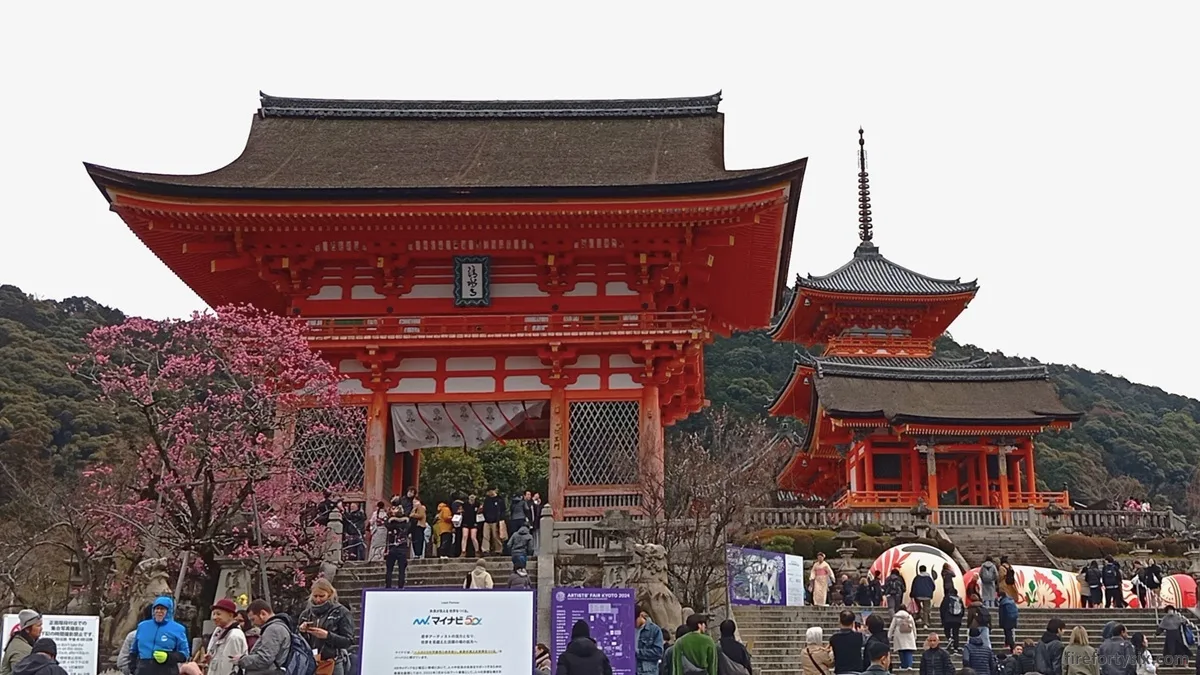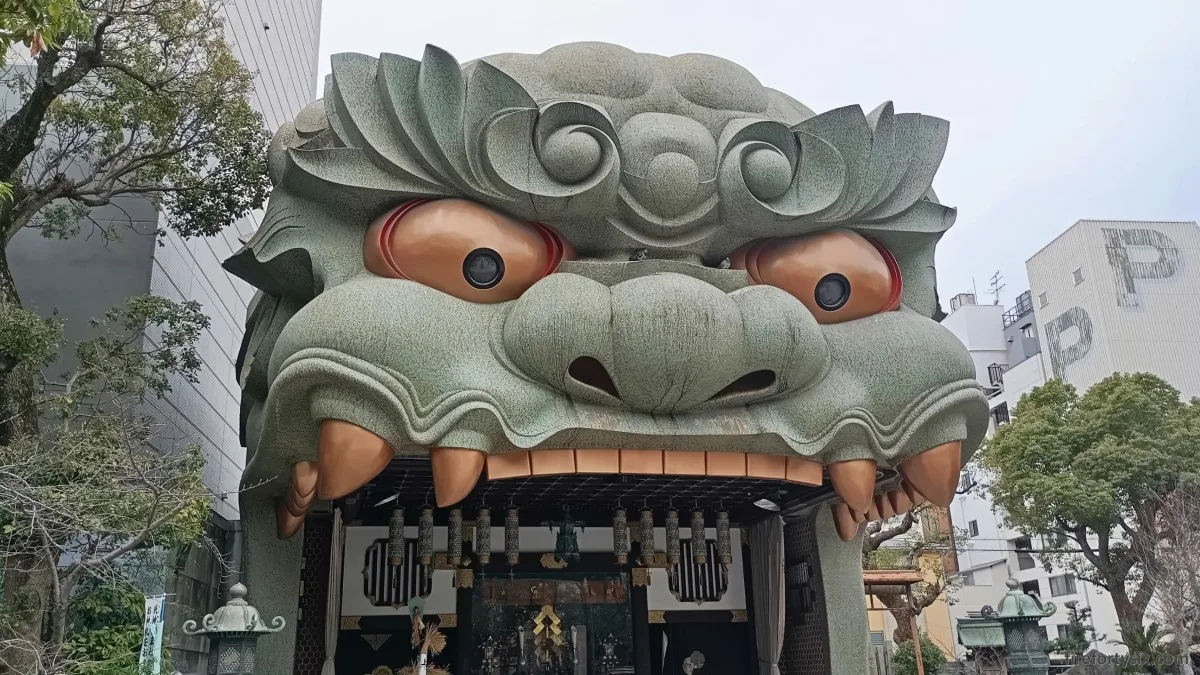Uji (宇治) has been on my travel list for quite some time now. It made the list ever since I realised that the temple that’s on every ¥10 coin is located there.
I figured that the temple had to be special. Special enough to be immortalised on an item that every Japanese, and every tourist to Japan, has in their pockets.
An added bonus was the fact that Uji is the mecca of matcha. And although I’m more of a coffee drinker, I do enjoy the occasional matcha, particularly if it’s of exceptional quality.
Despite the one-stone-two-birds situation, it wasn’t a city that I would travel long distances for, nor would I make a dedicated pilgrimage to.
However, if it just happened to be near where I was already at, then Uji would definitely be a worth a day trip.
Gion to Uji in 39 Minutes
We had already booked accommodations in Kyoto for six nights, and planned to spend the majority of our time wandering around the Shimogyo and Higashiyama wards.
Carving out one day to travel to Uji was a no-brainer. Especially since Dr. G, our trusty travel advisor, informed us that it would only take 39 minutes from our hotel in Gion.



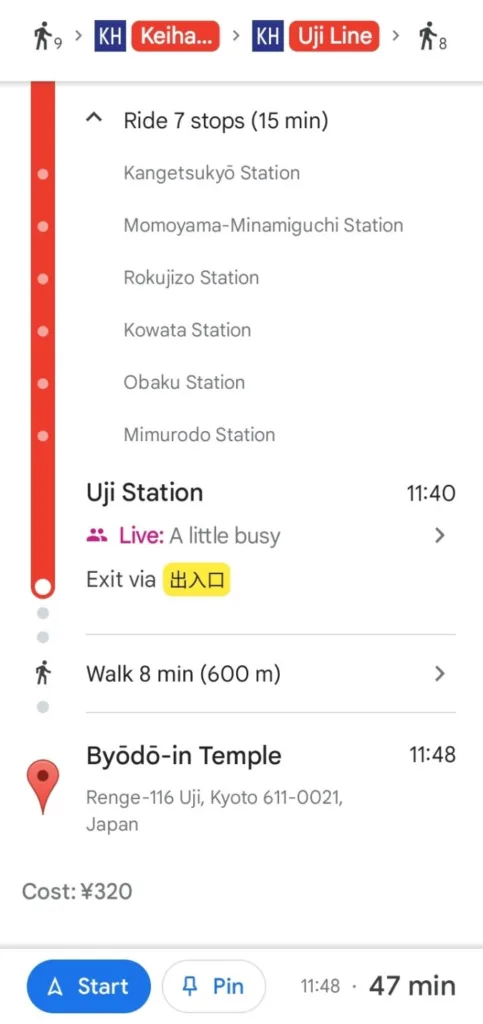
Keihan Railways would bring us from Gion-Shijo Station to Uji Station, with a change of trains at Chusojima Station.
I remember the days when the thought of taking intercity trains in Japan felt daunting, and frankly, quite scary. Boarding them always felt like a dangerous adventure.
Thankfully, those days are long gone. Now, we happily hop on and off trains to explore the country with the help of Dr. G.
He accurately maps out our entire journey and, at any given point in time, even shows us exactly where we are.

During the ride, my butt started feeling warm (apologies for the TMI). It was a strange, but not unpleasant, sensation, and quite comfortable since it was the tail end of winter and still quite chilly.
After confirming with The Wife that it wasn’t just a figment of my imagination, we started investigating and found out that the seats themselves were actually heated.
Coming from a tropical country, where it’s common to complain that the air conditioning in trains is not cold enough, this seemed like such an alien idea.
But the cosiness we felt on our bottoms throughout the ride quickly convinced us of its merit. When it comes to customer service, the Japanese really do think of everything.


Keihan Uji Station
It was a Sunday morning, and we were expecting Uji Station to be bustling with visitors. But it turned out to be the exact opposite.
Only a handful of people got off the train with us, and when we stepped outside of the station building, we were greeted by a quiet, empty and sleepy town.




We were definitely in the right place though. A large “Uji Sightseeing Guide Map” stood prominently outside, indicating the directions and distances to the major sights.

And just to be sure, metal tiles embedded in the ground pointed the way at key intersections. Our first stop was Byōdō-in Temple, and so we took a right and headed towards the Uji Bridge.

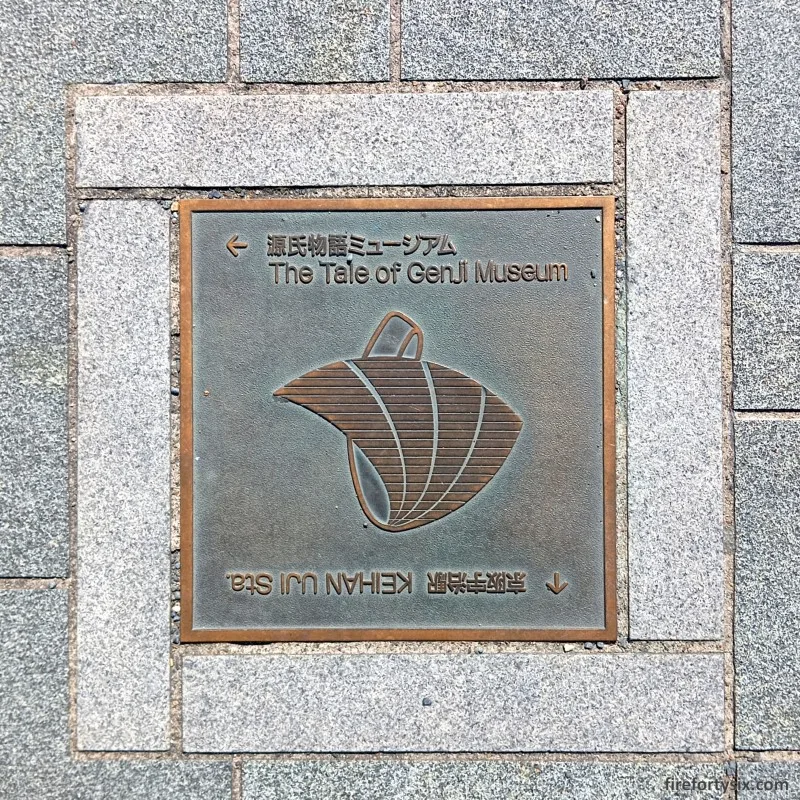
Crossing the Uji Bridge
The bridge in itself was rather plain looking and nothing really special. The view, on the other hand, definitely wasn’t.
Coming from a country/state/city like Singapore, vast open spaces with rolling hills and old low-rise buildings are almost non-existent. So, to us, this was a sight to behold.

It was kind of similar to the bridges over Kamo River in Kyoto city, except that there was considerably less traffic and way fewer buildings on each bank of Uji River.
The air also felt much fresher, and the skies more blue. We could even spot pairs of mandarin ducks leisurely floating around, without a care in the world.




Crossing the bridge took longer than expected. Not because it was exceptionally long, but because the surroundings were, to our eyes, exceptionally pretty.
A wooden plaque at the end of the bridge proclaimed that it was “… one of the oldest bridges in Japan. It is believed to have been constructed for the first time in 646…”
“… In it’s long history, this bridge has been damaged again and again by wars, floods and earthquakes. However, people have restored this bridge several times… so that tourists from Singapore can easily reach the main shopping street.”


Okay, I confess. I totally made up that last bit.
Byodoin Omotesando
But it doesn’t make it less true. Because once we got off the bridge, we were greeted by the entrance to the Byodoin Omotesando (平等院 表参道).
And that’s where we finally found our fellow tourists, both foreign and domestic.
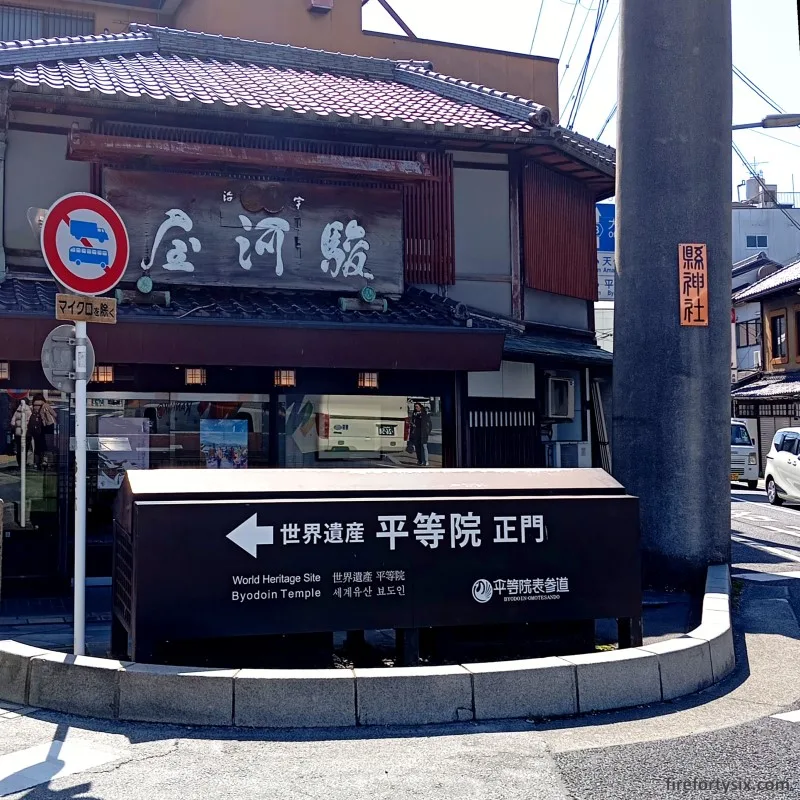
It wasn’t jam packed like Arashiyama and Ninenzaka in Kyoto. But we could still sense a buzz in the air, a similar feeling when walking down any shotengai (商店街) in any major Japanese city — the familiar buzz of capitalism.
Uji is famous for its tea, and the shopping street was lined with souvenir stores displaying numerous tea-flavoured snacks, specialist vendors roasting tea leaves and teahouses serving freshly-brewed matcha, sencha and hojicha.



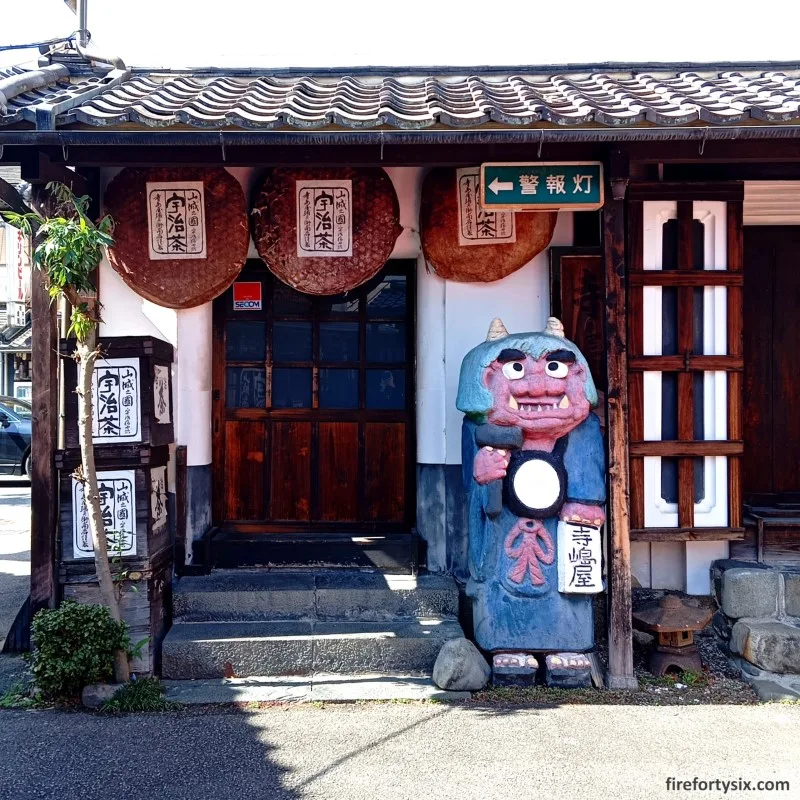
But First, Matcha Soba
We had worked up an appetite from all the walking, and found a small family-run soba shop helmed by a pair of elderly folks.
Torikiku (とり菊) was just a stone’s throw away from Byōdō-in Temple. It was highly rated in both Google (4.6⭐/5.0) and Tabelog (3.18⭐/5.00), evident from the perpetual queue outside its doors.
Both The Wife and I ordered their Chasoba Teishoku (¥800), which came with tempura, onigiri and pickles. Cold matcha soba came with my set, while hers was served in a bowl of hot dashi.
The portions were more generous than expected, and made for a tasty and hearty lunch that helped to fuel our subsequent exploration of Uji.
The Temple on Every ¥10 Coin
Starting, naturally, with Byōdō-in Temple (平等院). The entrance fee was ¥700 per adult, which included free run of the temple grounds, as well as admission into the Hoshokan Museum.
And in this day and age of “photos or it didn’t happen”, we, like every other visitor, took the obligatory headshot of a ¥10 coin in front of its inspiration, the majestic Phoenix Hall.


With that accomplished, we spent the another two hours strolling in the peaceful temple grounds. Admiring the numerous buildings steeped in centuries of history, and the countless decades-old tall trees.
The Hoshokan Museum (鳳翔館) ended up being the sleeper hit. I wasn’t expecting much when entering the museum, but I exited it in awe. The exhibits, in particular the numerous sculptures, were beautiful and majestic.
Many of them were designated as national treasures, including the 52 “Praying Bodhisattva on Clouds” wood sculptures and pair of “Phoenix” bronze castings that impressed me the most.
There’s No Such Thing as Too Much Matcha
As they say in Japan: “When in Uji, drink matcha.” So we went teahouse hopping, in an arguably misguided attempt to see if it was possible to overdose on the magical green powder.
We had a matcha soft serve ice cream at Masuda (ますだ茶舗), a hot matcha and a cold matcha parfait at Tsujiri (辻󠄀利宇治本店) and finally, matcha and gyokuro tea at Tsuen (通圓本店).
I’ll leave you to read about the gory details in the blog post below, but suffice to say that despite our best attempts, 1,3,7-trimethylxanthine overdose was not achieved.
Unexpected Side Quests
No grand adventure is complete without a handful of side quests, and ours materialised totally unexpectedly.
Whenever we’re in a foreign city, local supermarkets and grocery stores always attract us. Whether it’s Tokyo, Osaka or Seoul, we’re subconsciously attracted when we walk past one.
We didn’t expect it to happen in Uji, of all places. But when we walked past a sign that said “Fresh Market Appro”, we were drawn like moths to a flame.

It wasn’t a huge, sprawling hypermart, but it carried all the essentials.
In abundant supply was fresh produce like beautiful heads of cabbage, luscious packets of red tomatoes and perky bunches of pea sprouts. As well as a section with baked goods and prepared food.



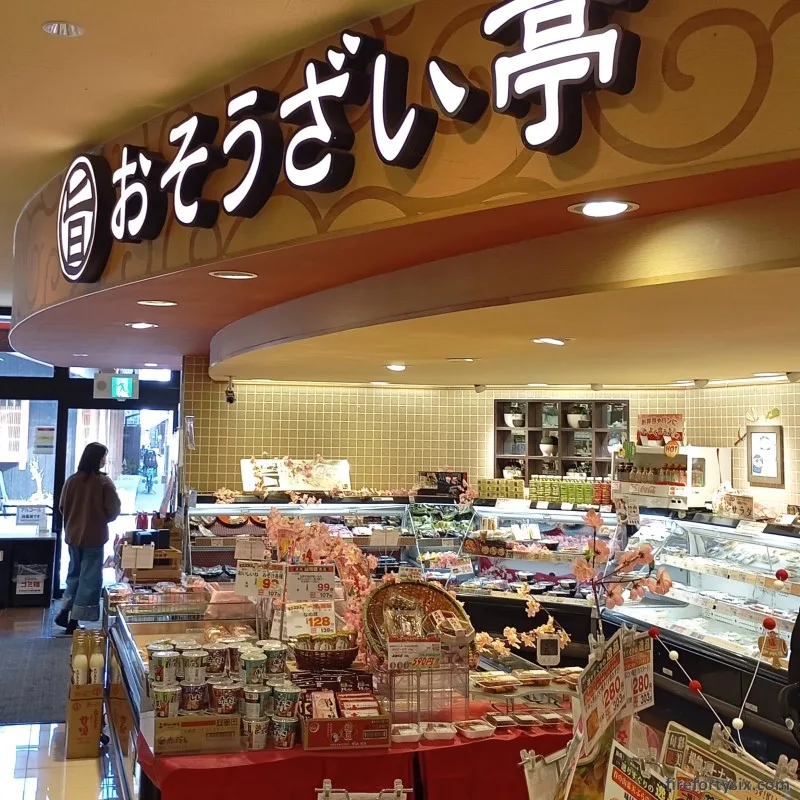
We managed to extricate ourselves after wandering the aisles for around 10 minutes, but then found ourselves sidetracked another distraction.
This time, it was purely The Wife’s fault initiative. A storefront display filled with different types of umeboshi caught her eye, and she happily walked into Ousu no Sato (おうすの里).
One thing led to another, and she ended up with a pretty paper bag filled with ume-flavoured foods worth ¥4,752. Courtesy of Yui-chan, the super kawaii salesgirl who happened to be on duty that day.
The final side quest was one that I almost missed.
While crossing Uji Bridge on the way back to the station, I didn’t pay attention to the plants along the road that were covered with netting.

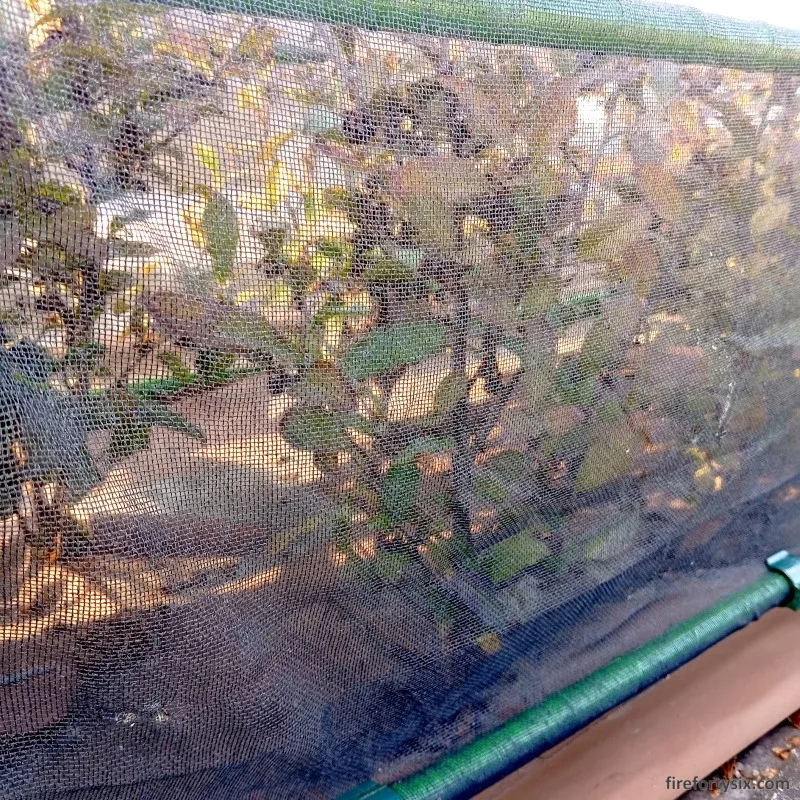
Half-way through, I became curious and stooped down to take a closer look. They appeared to be tea plants, which would make sense since this was Uji after all.
And I suppose there’s no better way to line the streets of a city that’s known for its tea, than to showcase their agricultural source.
Sayonara, Uji
We had reached the Keihan Uji Station just before noon, and by the time we made it back there again, it was already 6pm. The sun was already starting to set, with the skies taking on a warm, amber hue.
Being a city boy through and through, countrysides typically don’t feature in my travel plans. But I’m glad that we had finally made it to Uji, and were able to spend time enjoying what it had to offer.

If you’re interested to walk the same paths, see the same sights and try the same food (and drinks), below is a Wanderlog map with pins on all the places we visited.
You could probably cover all of them in half the time we did. But Uji feels like the kind of place that’s best enjoyed on a slower pace, and that’s exactly what we did.







